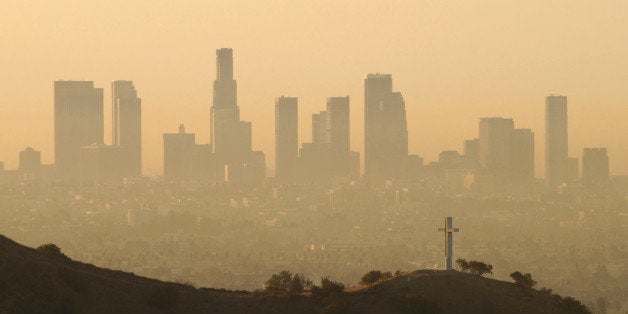
For decades the environmental justice movement has insisted that pollution is just another form of racism. Now a University of Minnesota study is conclusively confirming this painful reality.
The report found that, more than anything else, race is the determining factor in the levels of pollution that the country's communities are exposed to. Researchers came to the conclusion that people of color breathe 46-percent more nitrogen dioxide (NO) -- a toxic compound resulting from the burning of coal and oil -- than do non-Hispanic whites.
And what is most worrisome for our community: We are on top of the list of communities breathing the most polluted air.
"This is terrible," says Kim Wasserman-Nieto, winner of the 2013 Goldman Prize, the Nobel Prize of the ecology world, and an environmental justice hero. "These are the realities of what our people are feeling on a day-to-day basis. Things are not getting any better. We are the ones producing the least amount of pollution and yet feeling the most impact."
NO -- which causes asthma, other respiratory diseases and heart conditions -- is measured in parts per million (ppm). Among whites, the study found that exposure is 9.9 ppm. Among us, on the other hand, it is 15.6 ppm, and among black Latinos, 17.4 ppm, the highest in the country.
Wasserman-Nieto, who is also director of organizing and strategy at Little Village Environmental Justice Organization (LVEJO), the South Chicago environmental justice group that has been fighting polluters for years, underlines that the study also spells out the true costs of coal and oil.
"Our communities are starting to put two and two together," she says. "We are starting to see concrete evidence of how the fossil fuels industry is impacting our communities. Even if they aren't mining right next door to us, they are hitting us with the air quality issue."
The study also found something Wasserman-Nieto calls "astronomical." When comparing the levels of exposure between low-income whites and high-income Latinos, the latter turned out to be in worse shape.
"When I read that sentence, I had to read it three or four time because I could not believe it," she says. "It's not about 'pick yourself up by your bootstraps and move out to a better place.' You can't. Where are you supposed to go? The air quality is horrible in all of our communities."
The reason, the researchers explained, stems from the fact that Americans tend to live in clusters by race, and in our barrios we all are much more exposed to high levels of NO.
Another important factor is the proximity of our communities to freeways, what Wasserman-Nieto calls "toxic corridors," because gasoline and diesel are the largest emitters of NO.
According to a Centers for Disease Control study, more than 5 million people of color live close to these highways, especially in Southern California.
This was corroborated by this year's American Lung Association's State of the Air Report, which determined once again that the cities with the worst air quality are found in Southern California, where the country's largest concentrations of Latinos live.
The University of Minnesota study underlines the magnitude of this injustice by stating that if we all were exposed to the same levels of NO as white Americans, every year we would prevent 7,000 deaths of coronary heart disease.
"This is a call to arms," concludes Wasserman-Nieto. "I really hope, particularly for middle-class Hispanics who have seen this document, that this will be a wake-up call not only to become politically active but also to start supporting a lot of the organizations that are on the ground working to make it better."
That would be a huge step forward to end this racism in the air.
